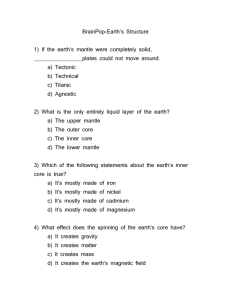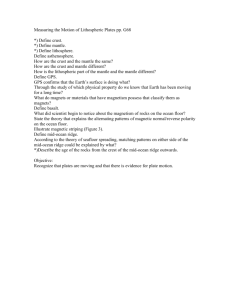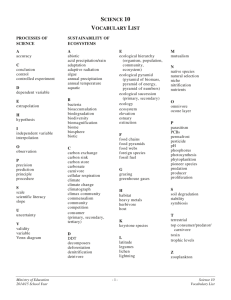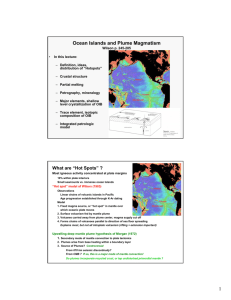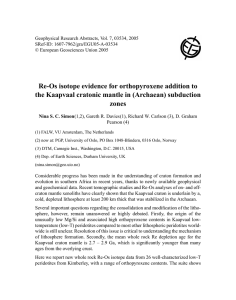To simulate transport of K and Ar out of the mantle to the crust and
advertisement
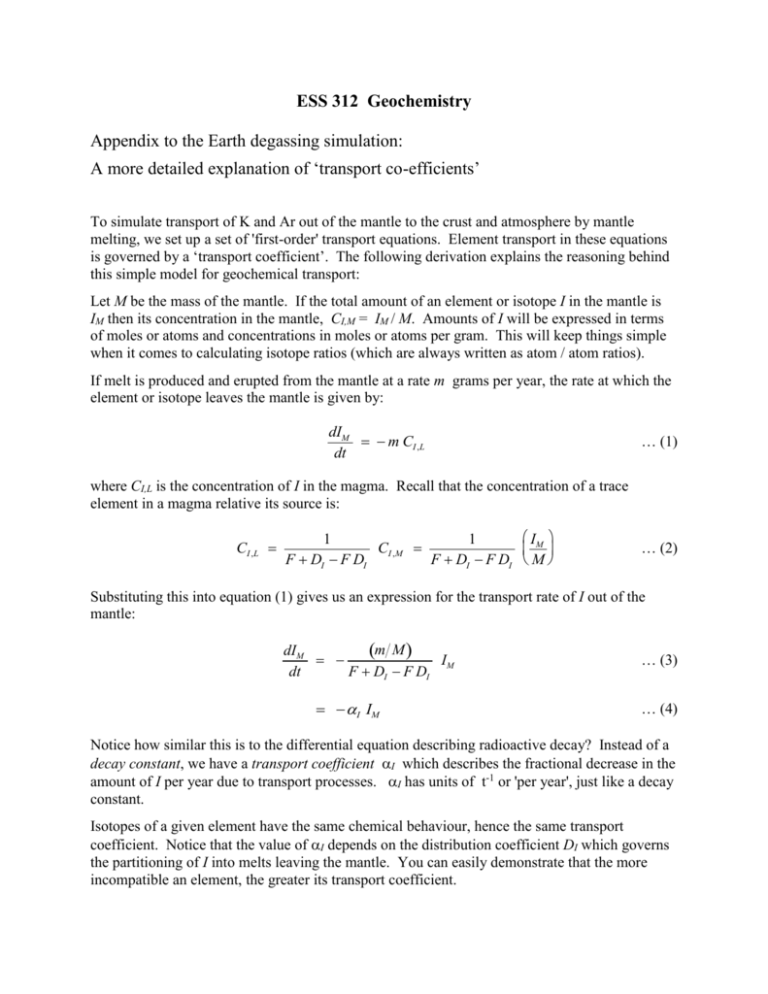
ESS 312 Geochemistry Appendix to the Earth degassing simulation: A more detailed explanation of ‘transport co-efficients’ To simulate transport of K and Ar out of the mantle to the crust and atmosphere by mantle melting, we set up a set of 'first-order' transport equations. Element transport in these equations is governed by a ‘transport coefficient’. The following derivation explains the reasoning behind this simple model for geochemical transport: Let M be the mass of the mantle. If the total amount of an element or isotope I in the mantle is IM then its concentration in the mantle, CI,M = IM / M. Amounts of I will be expressed in terms of moles or atoms and concentrations in moles or atoms per gram. This will keep things simple when it comes to calculating isotope ratios (which are always written as atom / atom ratios). If melt is produced and erupted from the mantle at a rate m grams per year, the rate at which the element or isotope leaves the mantle is given by: dIM m CI ,L dt … (1) where CI,L is the concentration of I in the magma. Recall that the concentration of a trace element in a magma relative its source is: IM 1 1 … (2) CI ,L CI ,M F DI F DI F DI F DI M Substituting this into equation (1) gives us an expression for the transport rate of I out of the mantle: dIM m M IM dt F DI F DI I IM … (3) … (4) Notice how similar this is to the differential equation describing radioactive decay? Instead of a decay constant, we have a transport coefficient I which describes the fractional decrease in the to transport processes. I has units of t-1 or 'per year', just like a decay amount of I per year due constant. Isotopes of a given element have the same chemical behaviour, hence the same transport coefficient. Notice that the value of I depends on the distribution coefficient DI which governs the partitioning of I into melts leaving the mantle. You can easily demonstrate that the more incompatible an element, the greater its transport coefficient.







